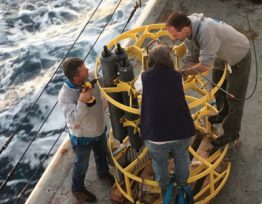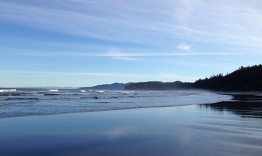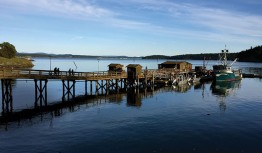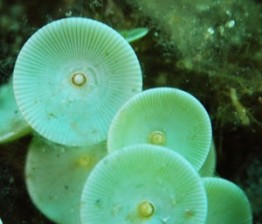The fifth West Coast Ocean Acidification Cruise is underway, with UW faculty, students, and staff investigating changes to ocean chemistry from Baja to British Columbia.
Read more at UW Today »West Coast study emphasizes challenges faced by marine organisms exposed to global change
The Pacific Ocean along the West Coast serves as a model for how other areas of the ocean could respond in coming decades as the climate warms and emission of greenhouse gases like carbon dioxide increases. This region—the coastal ocean stretching from British Columbia to Mexico—provides an early warning signal of what to expect as ocean acidification continues and as low-oxygen zones expand.
Read more at UW Today »The dream lab: UW's Friday Harbor Laboratories
Make no mistake, the sea is changing. Warming waters are causing some organisms to become more abundant, while undermining others’ ability to fight off disease. Invasive species, overfishing and mutated diseases are all signs and sources of changes to come. Increased acidity, whether from human activities like runoff and carbon emissions or from the upwelling of deeper waters, affects the ability of clams, oysters and fish to form shells and skeletons.
Read more in Columns »Oceanography consortium donates XPrize winnings to UW sensor lab
A team of industrial, academic, and nonprofit institutions that was among the top finishers of the recent ocean acidification XPrize is donating its winnings to a University of Washington lab that helps track ocean conditions worldwide. The donation, made Oct. 13 during an event at the UW College of the Environment and announced by Honeywell, will allow the UW and the international Argo program to begin broadening observations to include ocean acidification.
Read more at UW Today »A more acidic ocean will bend the mermaid’s wineglass
New research from the University of Washington’s Friday Harbor Laboratories shows that a more acidic ocean can weaken the protective shell of a delicate alga. The findings, published Sept. 9 in the journal Biology Letters, come at a time when global climate change may increase ocean acidification. The creature in question is Acetabularia acetabulum, commonly called the mermaid’s wineglass. Reaching a height of just a few inches, this single-celled alga lives on shallow seafloors, where sunlight can still filter down for photosynthesis.
Read more at UW Today »





